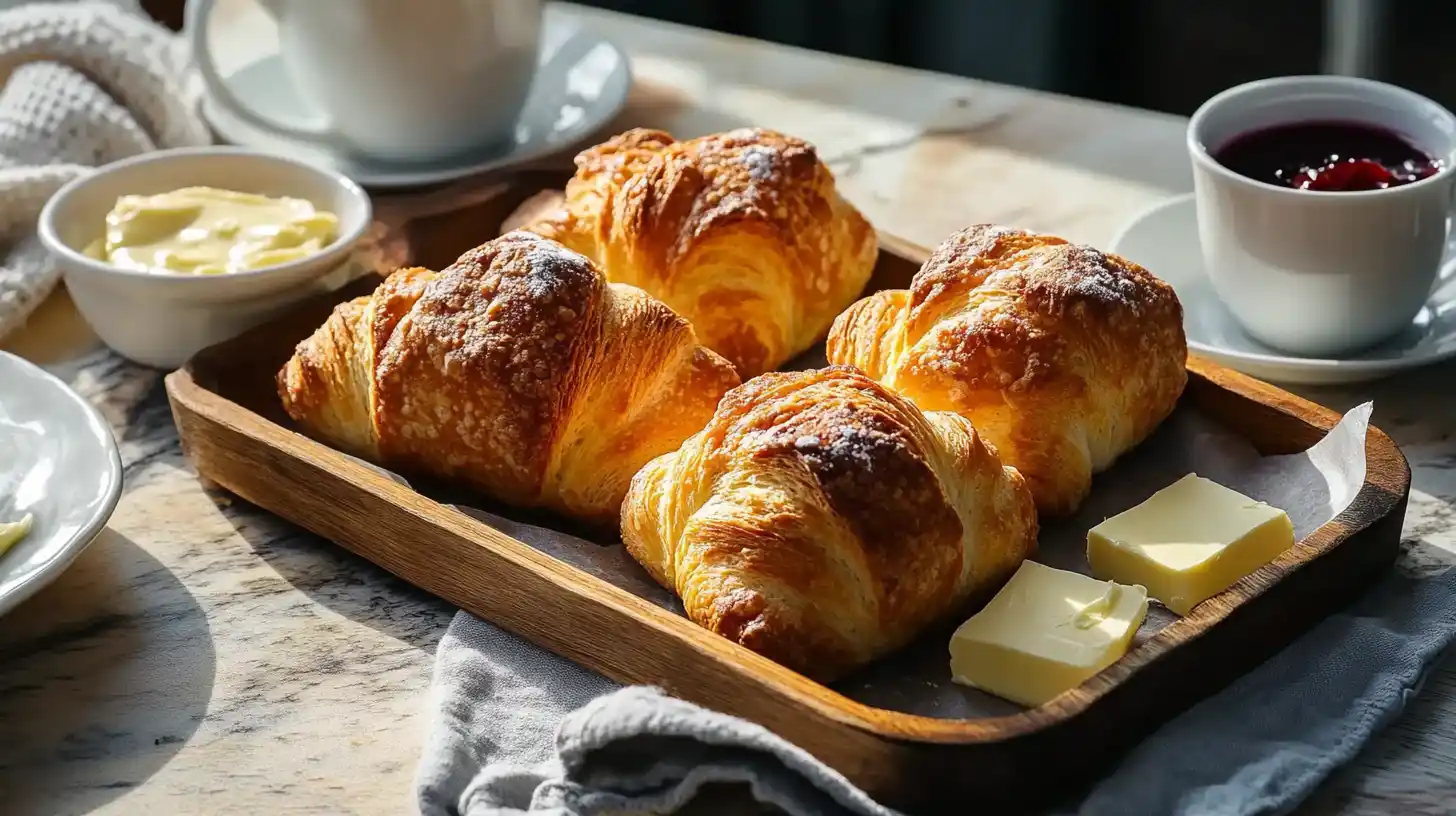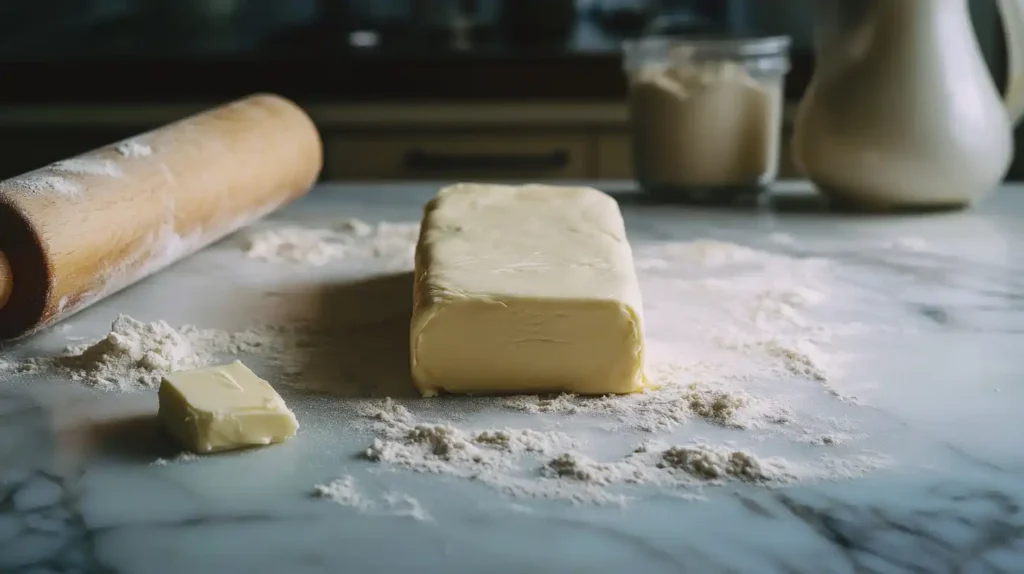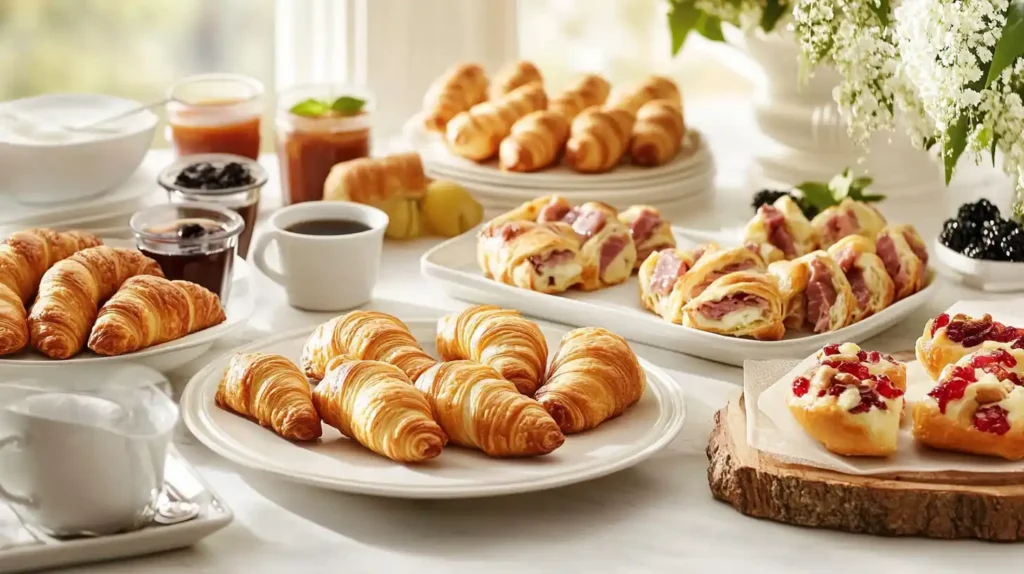Last updated on: January 25, 2025

Table of Contents
Gipfeli Recipe: Making this iconic Swiss pastry at home might seem daunting, but it’s a truly rewarding and delicious experience. This guide will take you step by step through everything you need to know about crafting these buttery, flaky treats from scratch. From exploring their rich history and essential ingredients to perfecting the baking process, you’ll gain the skills and confidence to create flawless gipfeli every time. Whether you’re an experienced baker or just starting out, this article will inspire you to bring the authentic taste of Switzerland to your breakfast table.
Let’s dive right in, starting with the basics of what makes gipfeli so special.
Introduction to Gipfeli
What is a Gipfeli?
A gipfeli is Switzerland’s delightful answer to the croissant. While the two pastries look similar, gipfeli tends to have a denser texture and a slightly less buttery flavor. They’re crescent-shaped pastries made with laminated dough, resulting in a soft interior and a flaky, golden crust. A staple of Swiss breakfasts, gipfeli pairs beautifully with coffee, jam, or butter.
A Brief History of Swiss Gipfeli
The origins of gipfeli trace back to Austria and France, where the art of laminated dough began. Over time, the Swiss adapted this pastry to suit their tastes, creating a less greasy and slightly sweeter version. Today, gipfeli is a beloved part of Swiss culinary culture, symbolizing simplicity and quality. You’ll find them in almost every Swiss bakery, served fresh each morning.
How Gipfeli Differs from Croissants
Though they may look like cousins, gipfeli and croissants have distinct differences. Croissants are known for their light, airy texture and strong buttery flavor, while gipfeli is slightly heavier, with a subtle sweetness that makes them unique. Additionally, gipfeli often contains less butter and fewer layers, making them a bit easier to prepare at home.
Ingredients for Making Gipfeli
Key Ingredients Overview
To create a perfect gipfeli recipe, you’ll need a handful of essential ingredients. The base requires all-purpose flour, unsalted butter, milk, sugar, salt, and yeast. The butter plays a crucial role in forming the iconic flaky layers, while the yeast ensures the pastry rises beautifully. If you’re aiming for an authentic Swiss flavor, a pinch of vanilla sugar or a dash of lemon zest can be added for subtle sweetness.
Substitutes and Variations for Dietary Needs
For those with dietary restrictions, substitutions can make this recipe accessible. Swap regular butter with vegan butter or margarine for a dairy-free option. Gluten-free all-purpose flour works as a substitute for traditional flour, though it may affect the texture slightly. For a healthier version, you could experiment with whole-grain flour, though the result will be less flaky.
Tips for Choosing Quality Ingredients
When making gipfeli, quality matters. Use fresh, high-fat butter for rich flavor and perfectly laminated layers. Opt for unbleached, high-protein flour for better elasticity during the dough-folding process. If possible, go for European-style butter, as its lower water content helps achieve the signature flaky texture. Always check the expiration date on your yeast to avoid flat or dense pastries.
If you’re interested in breakfast recipes with simple ingredients, you might enjoy this easy pancake recipe as well.
Step-by-Step Guide to Making Gipfeli

Preparing the Dough
Start by combining warm milk, sugar, and yeast in a bowl. Let it rest until frothy—this is proof that your yeast is alive and active. In another bowl, mix flour and salt. Gradually add the yeast mixture, kneading it into a smooth dough. Once combined, let the dough rest in a warm place until it doubles in size.
Laminating the Dough: Layers and Butter
To achieve flaky layers, you’ll need to laminate the dough. Roll the dough into a rectangle, and spread a thin, even layer of softened butter across two-thirds of the surface. Fold the unbuttered third over the middle third, then fold the remaining third on top, like folding a letter. Chill the dough for 30 minutes, then repeat the process two more times to create multiple buttery layers.
Shaping the Perfect Gipfeli
Roll the laminated dough into a large rectangle about 5mm thick. Using a sharp knife or pizza cutter, divide it into long triangles. Roll each triangle tightly from the wide base to the tip, forming a crescent shape. Make sure the tip is tucked underneath to prevent unrolling during baking.
Baking Tips for Flaky Perfection
Place the shaped pastries on a baking sheet lined with parchment paper. Brush them with a mixture of egg yolk and milk for a golden finish. Let them rise again for 15–20 minutes before baking. Bake at 375°F (190°C) for 12–15 minutes or until golden brown and irresistibly flaky.
Tips and Tricks for Perfect Gipfeli
Common Mistakes to Avoid
Making gipfeli can be a rewarding experience, but there are a few common pitfalls to avoid. First, don’t rush the dough chilling process. Each lamination step needs sufficient chilling time to prevent the butter from melting into the dough. Skipping this will ruin the flaky layers. Second, use cold butter throughout the process; soft butter can lead to a greasy pastry. Lastly, be precise with your measurements. Baking is a science, and even small deviations can affect the outcome.
Pro Secrets to Achieve Flaky Layers
For professional-level gipfeli, ensure the dough is rolled out evenly during every step of the lamination process. Thin, uniform layers create the perfect structure for flakiness. When shaping, roll tightly but gently to prevent air gaps that could expand unevenly during baking. Another tip: always bake with steam. Adding a small tray of water to your oven while baking will enhance the crust’s texture and help achieve the signature golden finish.
Storage and Reheating Tips
Freshly baked gipfeli taste best, but you can store leftovers in an airtight container at room temperature for up to two days. To enjoy them as if freshly baked, reheat in the oven at 350°F (175°C) for 5–7 minutes. Avoid microwaving, as it can make them soggy. For longer storage, freeze unbaked shaped dough and bake directly from frozen for that same flaky perfection.
Variations and Pairings
Sweet and Savory Gipfeli Variations

While the classic gipfeli recipe is simple and timeless, there are plenty of ways to customize it. For a sweet version, consider filling the dough with chocolate, almond paste, or a dollop of fruit jam before rolling. To elevate your breakfast spread, try savory variations like ham and cheese or spinach and feta. The key is to avoid overloading the dough with filling, as it can compromise the structure.
Serving Ideas: Pairings with Coffee or Tea
Gipfeli makes the perfect companion to a warm beverage. Pair a buttery, flaky pastry with Swiss-style hot chocolate for an indulgent treat, or enjoy it alongside a cup of freshly brewed coffee for a classic breakfast. For tea lovers, a light black or herbal tea balances the richness of the pastry beautifully. Add fresh fruit, yogurt, or even a soft-boiled egg to round out your morning meal.
For more mouthwatering recipes to complement your breakfast table, check out these creative pancake recipes for fresh ideas.
FAQs About Gipfeli and Related Pastries
What is the Difference Between a Croissant and a Gipfeli?
The most noticeable difference between a croissant and a gipfeli lies in their texture and flavor. While croissants are renowned for their rich buttery layers and light, airy crumb, gipfeli has a slightly denser texture with a more subtle sweetness. Another distinction is the butter content. Croissants use more butter during lamination, giving them their indulgent flavor, whereas gipfeli is less greasy. Additionally, croissants often feature straight or crescent shapes, while gipfeli has a distinct crescent form.
What is the Secret to a Good Gipfeli?
A good gipfeli recipe relies on a few key factors: high-quality ingredients, proper lamination, and patience. Chilling the dough between laminations is critical to keeping the butter from melting. Uniform rolling and folding ensure even layers, which contribute to the signature flakiness. Additionally, using fresh yeast and baking at the right temperature help achieve that golden, crispy crust and soft interior. Finally, practice makes perfect—your gipfeli will only improve with time!
What Are the Essential Ingredients for Gipfeli?
The core ingredients in a gipfeli recipe are flour, butter, milk, sugar, salt, and yeast. For a subtle twist, some recipes include vanilla sugar or lemon zest. These simple ingredients work together to create the perfect balance of flavor and texture. If you’re experimenting, remember to stick to high-quality, fresh ingredients for the best results.
How Long Does It Take to Make Gipfeli?
Making gipfeli from scratch is a labor of love, typically taking around 4–6 hours, including dough resting and chilling times. The process involves preparing the dough, laminating with butter, shaping, and baking. While time-intensive, the payoff of fresh, homemade gipfeli is worth every minute.
Expert Advice from Top Gipfeli Bakers
Insights from Swiss Bakers
Swiss bakers emphasize the importance of technique and patience in creating the perfect gipfeli. One expert tip is to keep your hands cool while working with the dough to prevent the butter from softening too quickly. They also suggest resting the shaped pastries in the fridge for a final chill before baking, ensuring sharper, more defined layers. Lastly, Swiss bakers often use a flour-butter ratio of 2:1 for an ideal balance of flakiness and structure.
Recommended Tools for Gipfeli Baking
To make your gipfeli recipe a success, having the right tools can make all the difference. A sturdy rolling pin is essential for laminating the dough evenly. A pizza cutter or sharp knife helps you cut clean, precise triangles for shaping. Additionally, a pastry brush is useful for applying the egg wash that gives gipfeli their golden shine. Investing in a high-quality baking sheet and parchment paper will also ensure even baking and easy cleanup.
Conclusion and Final Thoughts
Why You Should Try Making Gipfeli at Home
Making your own gipfeli recipe at home is not just about creating a delicious pastry—it’s about experiencing the joy of crafting something traditional, beautiful, and uniquely Swiss. While it may seem challenging at first, the satisfaction of biting into a flaky, golden gipfeli that you’ve made from scratch is truly unmatched. It’s a project that rewards patience and attention to detail.
Incorporating Gipfeli into Your Breakfast Routine
Gipfeli is the perfect way to elevate any breakfast or brunch spread. Pair them with your favorite coffee or tea for a classic European-style morning. For a balanced meal, serve gipfeli alongside fresh fruit, yogurt, or soft cheeses. Whether you’re making a sweet version or a savory twist, these pastries will bring a touch of Swiss charm to your table.

